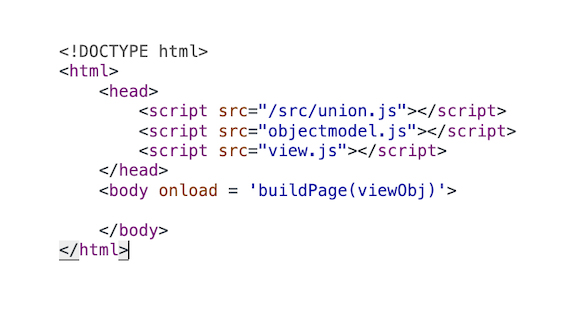The modern web is a complex ecosystem where multiple languages coexist to create the web pages we interact with daily. HTML for markup, CSS for styling, and JavaScript for logic – it’s a trio we’re all familiar with. However, what if there was a way to streamline web development, reducing the need for juggling between these languages and simplifying the entire process? This article introduces you to union.js, a groundbreaking concept that challenges conventional web development paradigms.
Unifying Web Development
Web development has come a long way, marked by the evolution of various technologies. However, the legacy of solving past challenges using different tools has led to a cluttered landscape. Modern web pages often incorporate HTTP, CSS, JavaScript, SVG, and more. This article proposes a unified approach to web content creation, where one primary language and syntax take center stage, eliminating the need for constant context switching.
Simplifying Development
As web developers, we frequently find ourselves navigating the realms of CSS, JavaScript, and HTML markup. The blurred lines between these technologies often leave us pondering the best approach for specific tasks. Should we handle a visual change in CSS, update an attribute in JavaScript, or create a new style altogether? The multitude of choices can be overwhelming. union.js offers a fresh perspective, seeking to simplify this complexity.
The Power of JavaScript Objects
One of the core ideas behind union.js is the notion that the information typically stored in HTML markup can also be represented efficiently using JavaScript objects. Both HTML and JavaScript share a hierarchical structure, with sub-elements and attributes. This revelation opens the door to a new way of creating web content – one that relies primarily on JavaScript. Instead of toggling between different technologies, we can harness the full potential of JavaScript objects to streamline development.
A Practical Example
Consider a simple web form for user input. In conventional web development, this would involve HTML markup, a stylesheet for styling, and JavaScript for logic. However, union.js challenges this approach. By crafting JavaScript objects that mirror the structure and content of the web page, we can achieve the same outcome using a single language. These objects encompass everything from page structure and content to styling and logic.
// JavaScript objects representing web content
var dataObject =
InvoiceDate: '2016-01-15',
Customer: 'Andy Jones',
DeliveryAddress: '273 Honeydew Boulevard, 22178'head:
title: ‘union.js – view-model example’
,
body:
// … (representation of HTML structure)
,
style:
// … (representation of CSS styles)
One noteworthy aspect is that event handling in this unified approach only references elements defined in JavaScript, eliminating the need for DOM traversal. union.js seamlessly generates the HTML and CSS from these JavaScript objects, ensuring that everything stays in sync.
Introducing union.js
union.js is a compact library that empowers developers to create web content primarily using JavaScript objects. It leverages the inherent structure of JavaScript objects to generate HTML and CSS during page loading. Notably, union.js fosters bidirectional synchronization, meaning that user interactions automatically update JavaScript objects, and changes to these objects are reflected in HTML and CSS.
Implementation and Integration
To incorporate union.js into your web development workflow, you simply include it in your HTML stub:
<script src="union.js"></script>
The buildPage function accepts a JavaScript object containing page information, serving as the view in a Model-View-Controller (MVC) pattern. The data object (dataObject in our example) represents the model and the controller functionality is seamlessly handled by union.js. This unification simplifies the development process and eliminates the need for complex document traversal.
A Working Example
Here’s a functional illustration of union.js in action. It demonstrates how JavaScript objects replace the conventional trio of HTML, CSS, and JavaScript for web content creation, offering a more streamlined and efficient approach.
The traditional landscape of web development, with its multitude of languages and syntaxes, can be overwhelming. union.js presents a revolutionary way to create web content by embracing JavaScript objects as the primary coding element. This approach unifies the development process, reducing complexity and enhancing synchronization. With union.js, the power to streamline web development is in your hands, enabling you to achieve more with less and unlock new possibilities in the ever-evolving web ecosystem. Embrace the unified approach and simplify your journey as a web developer.

